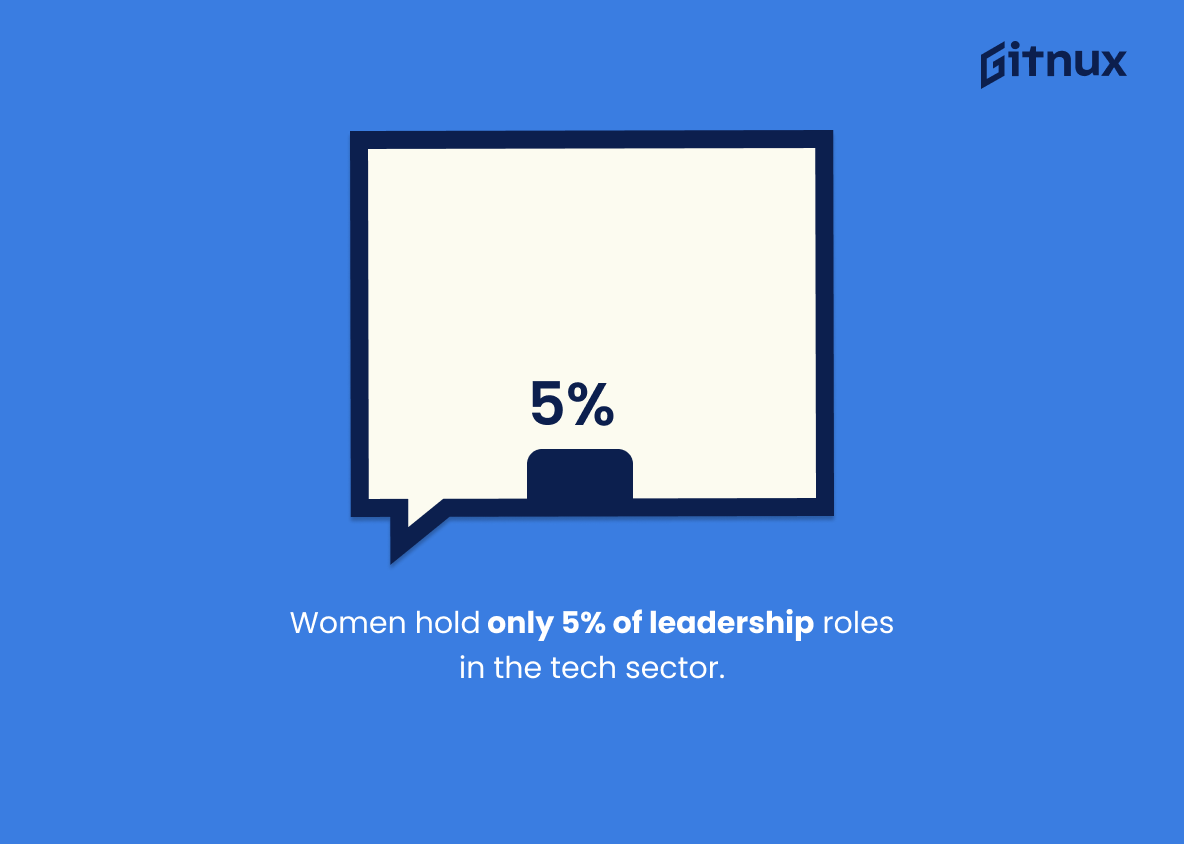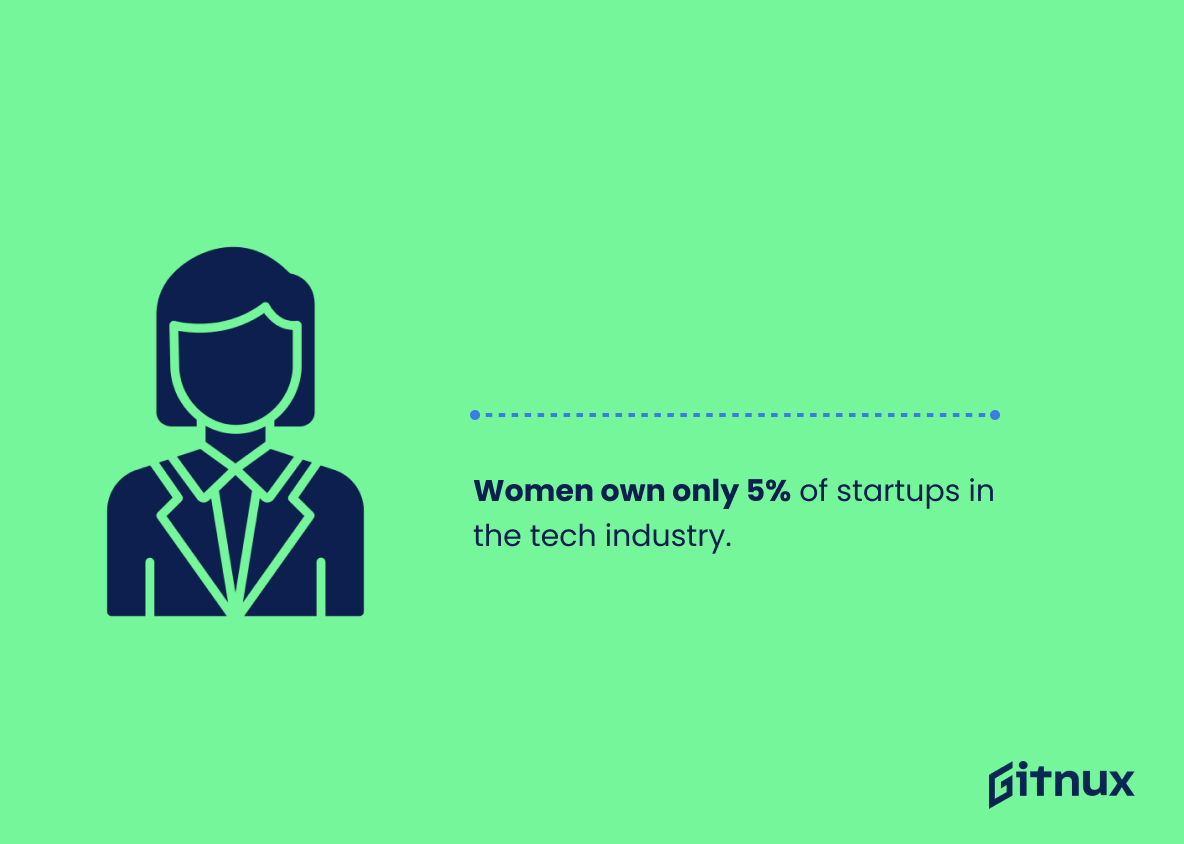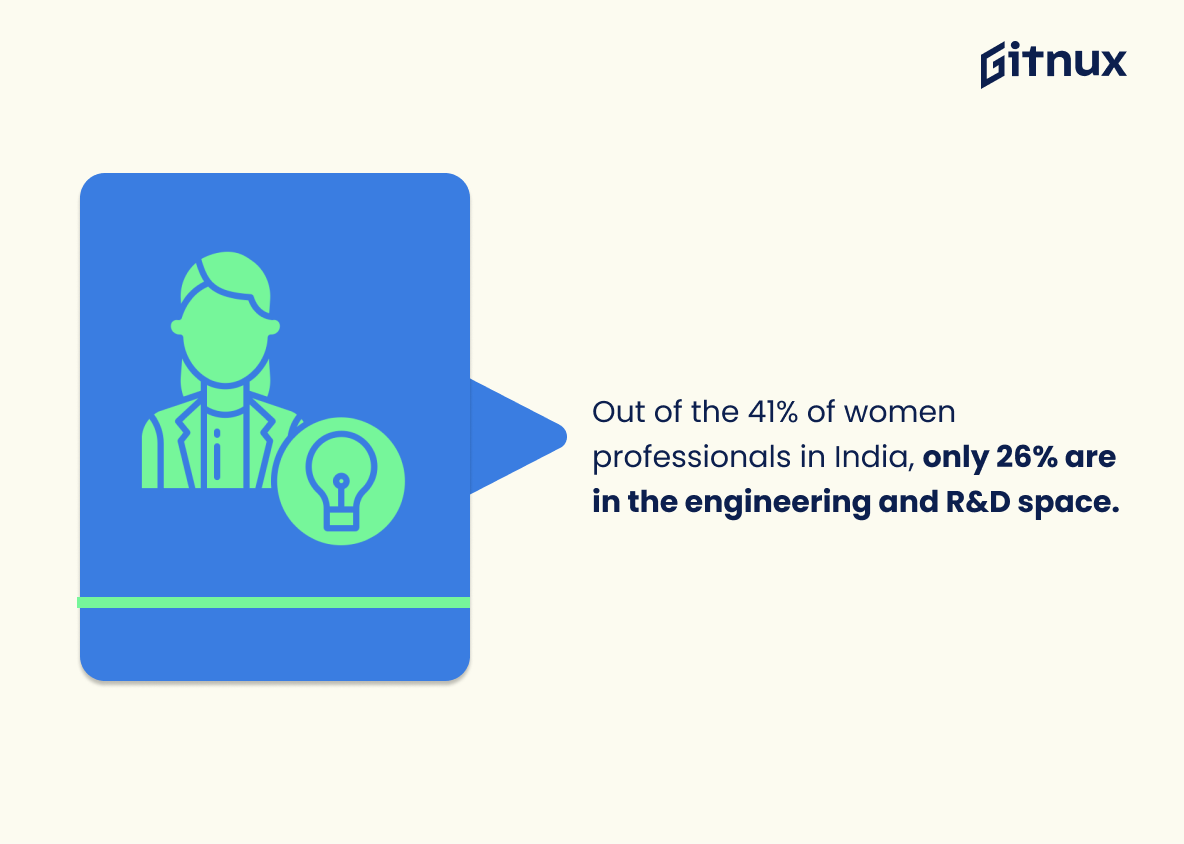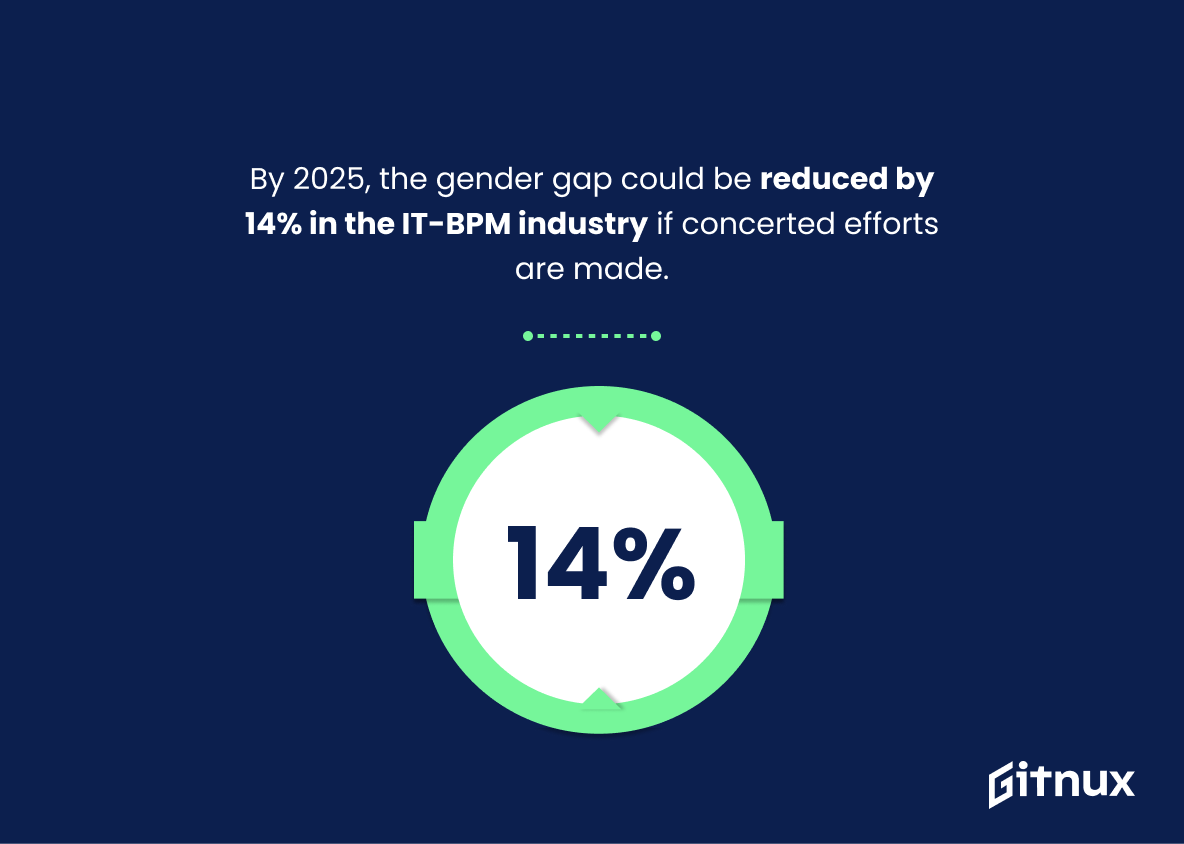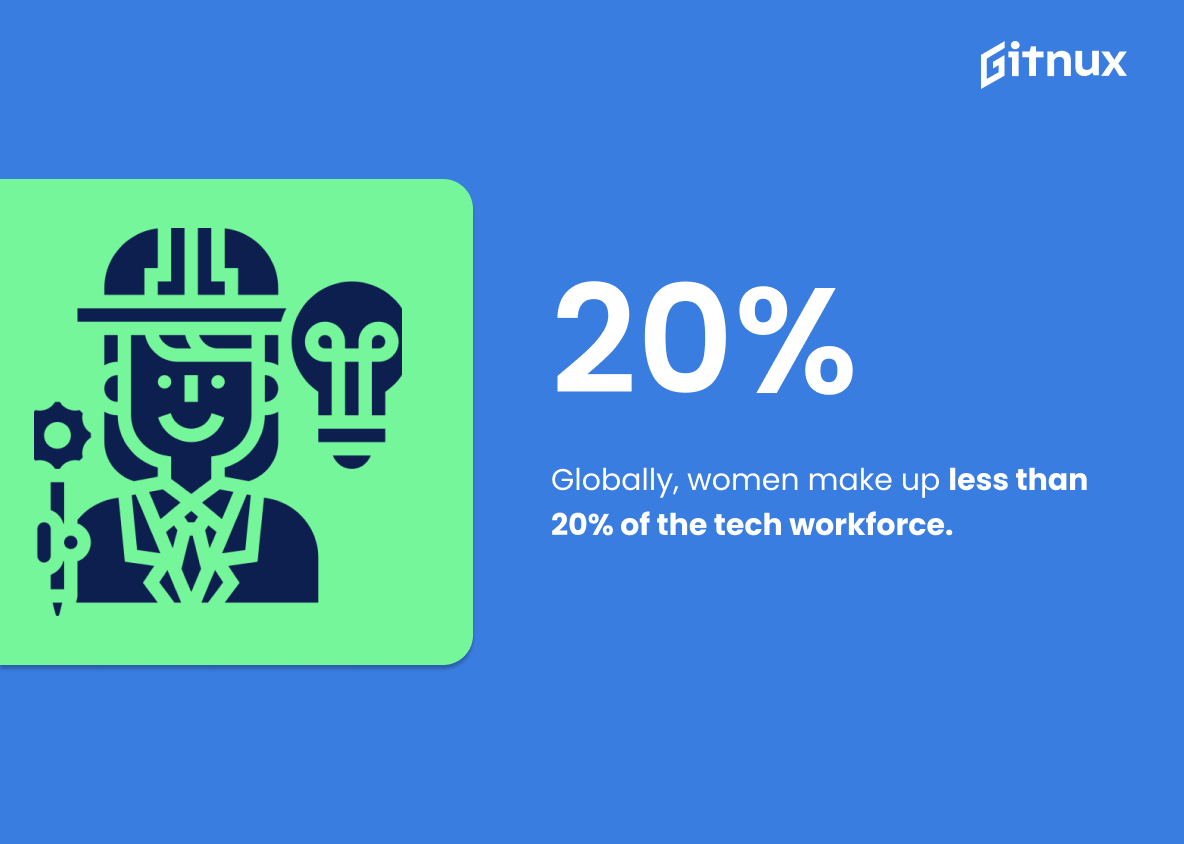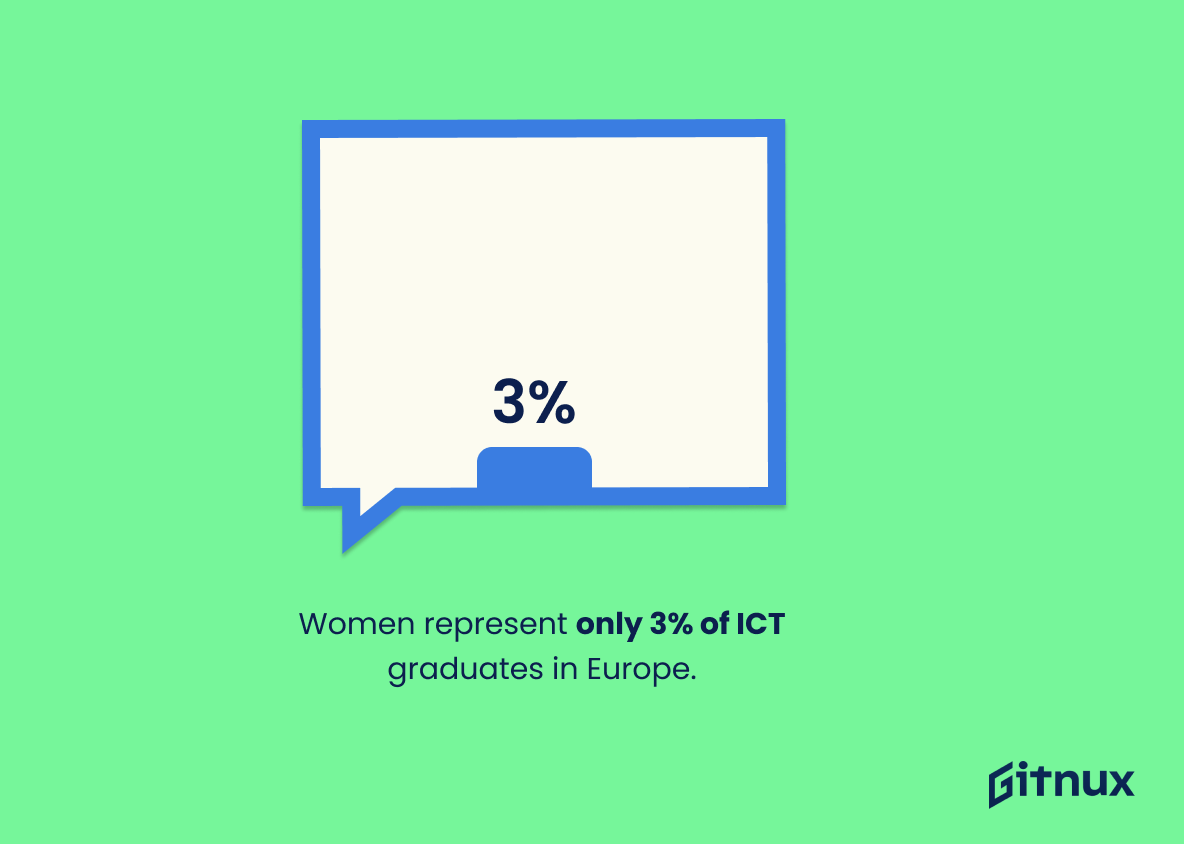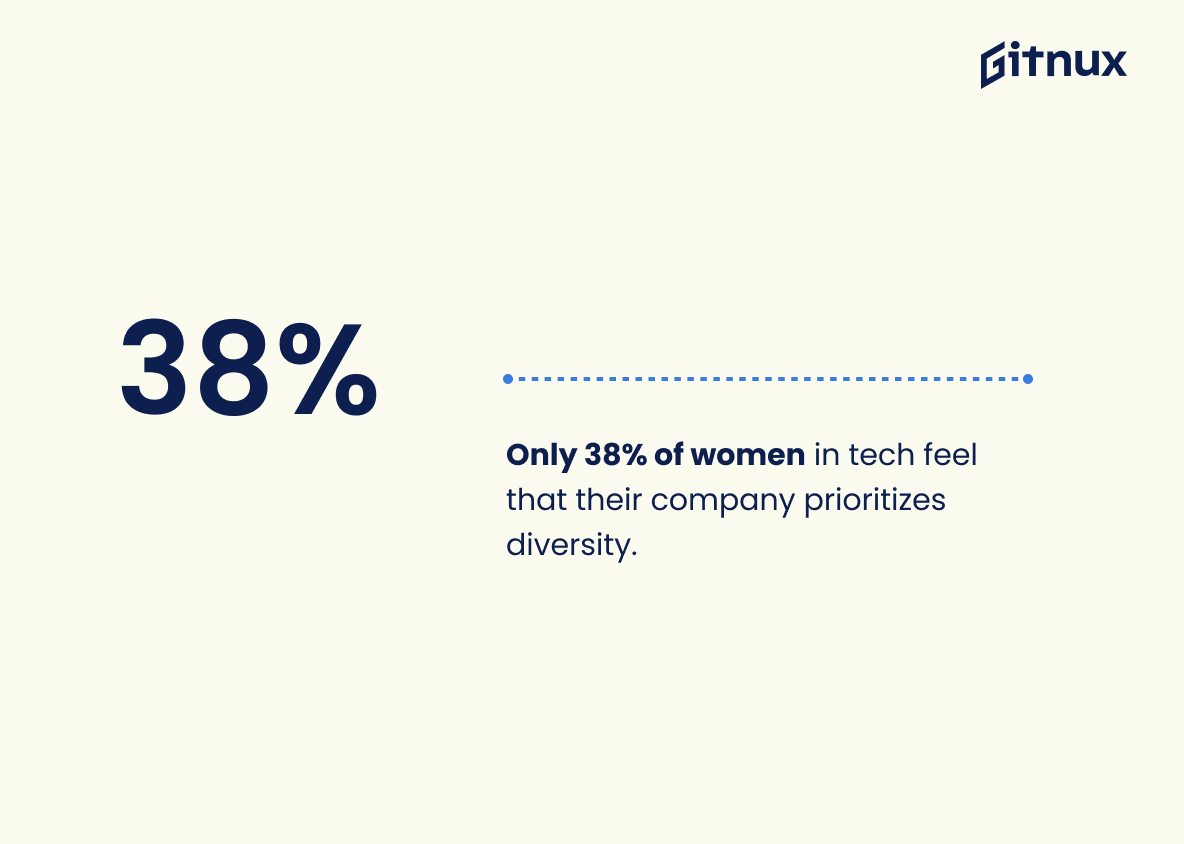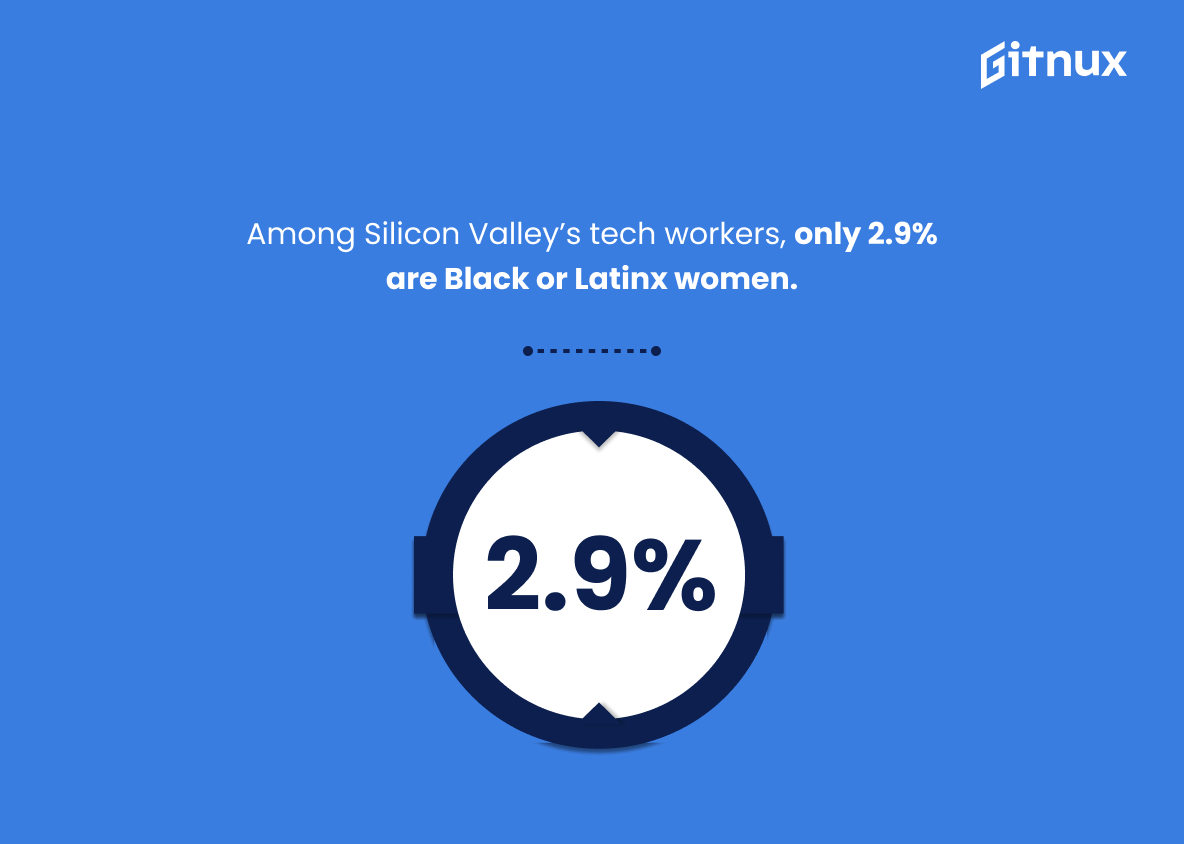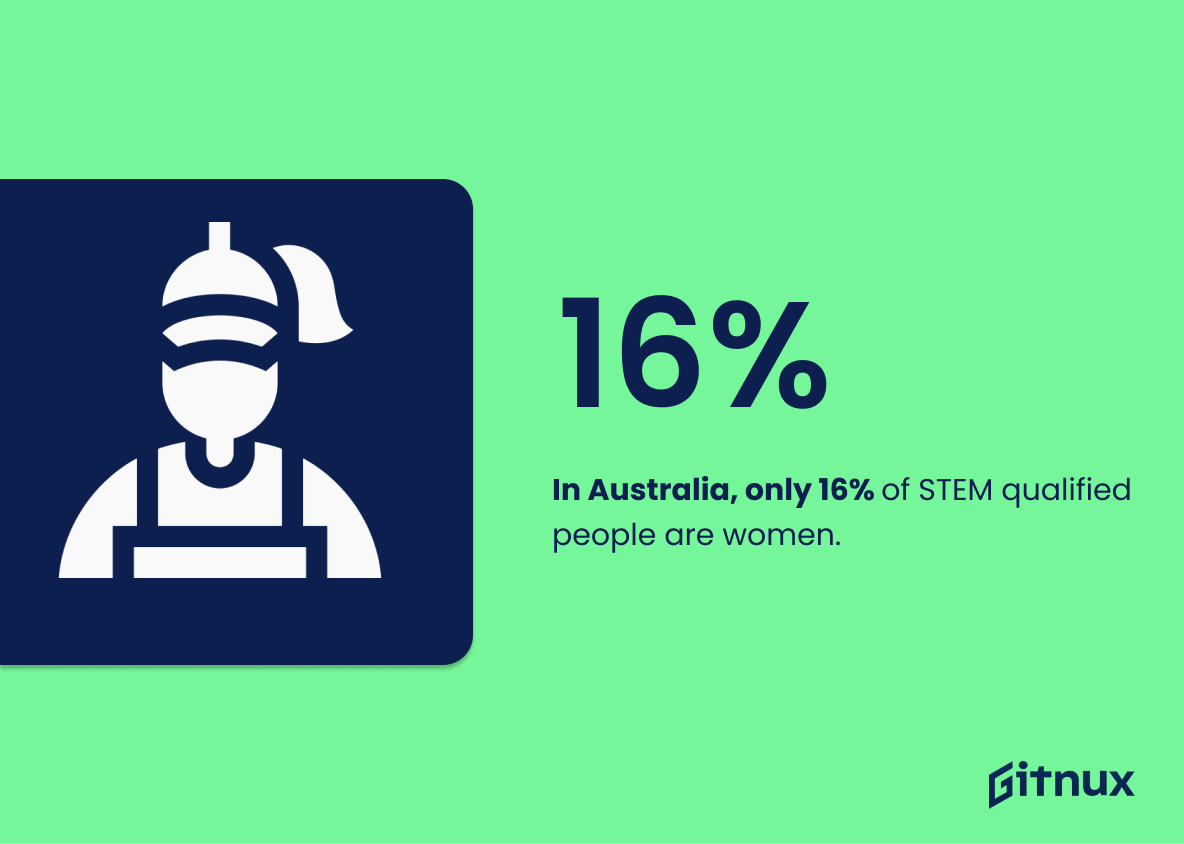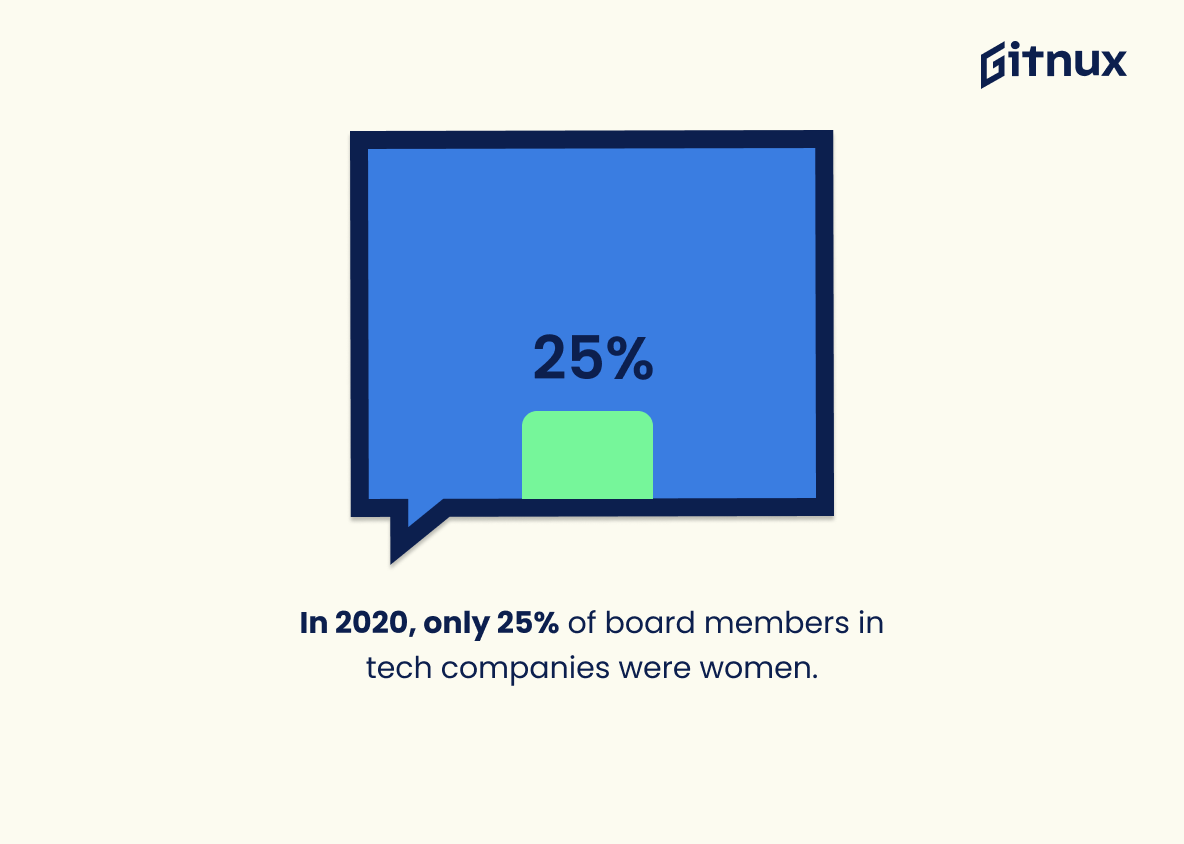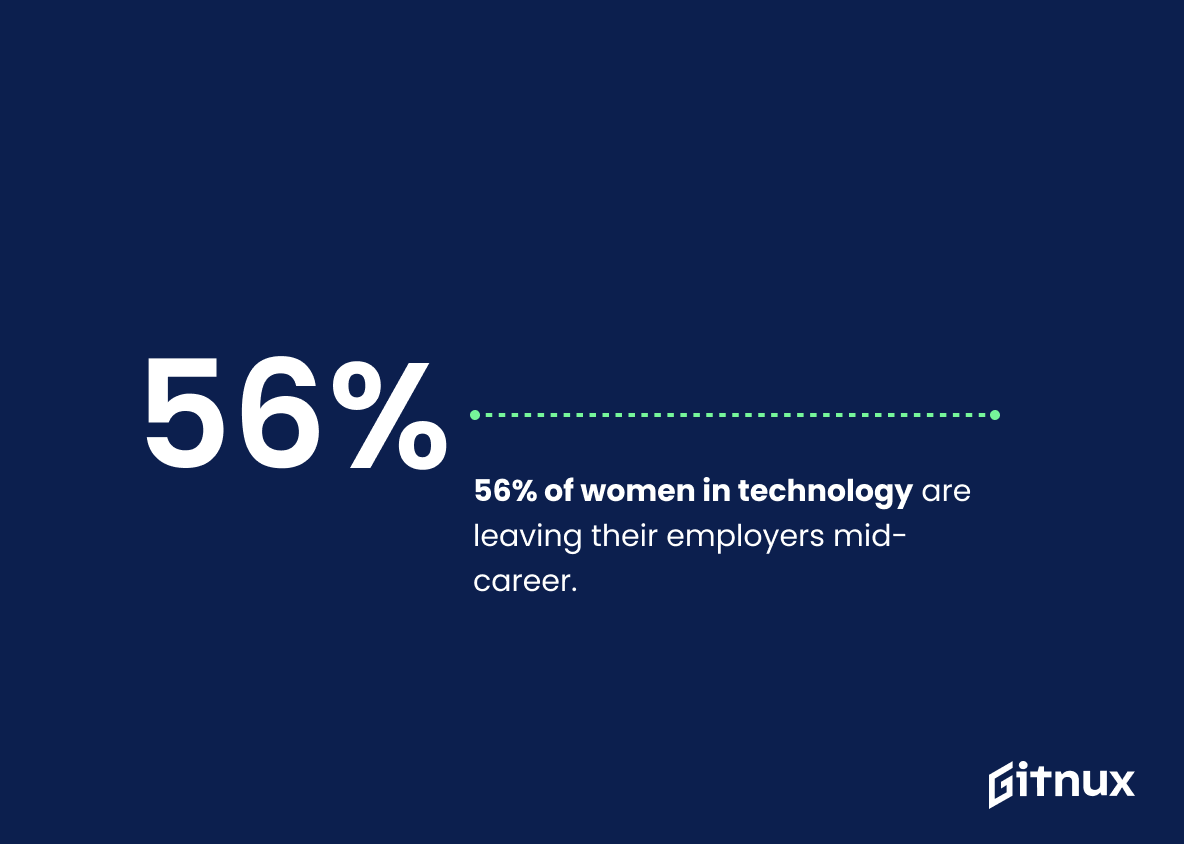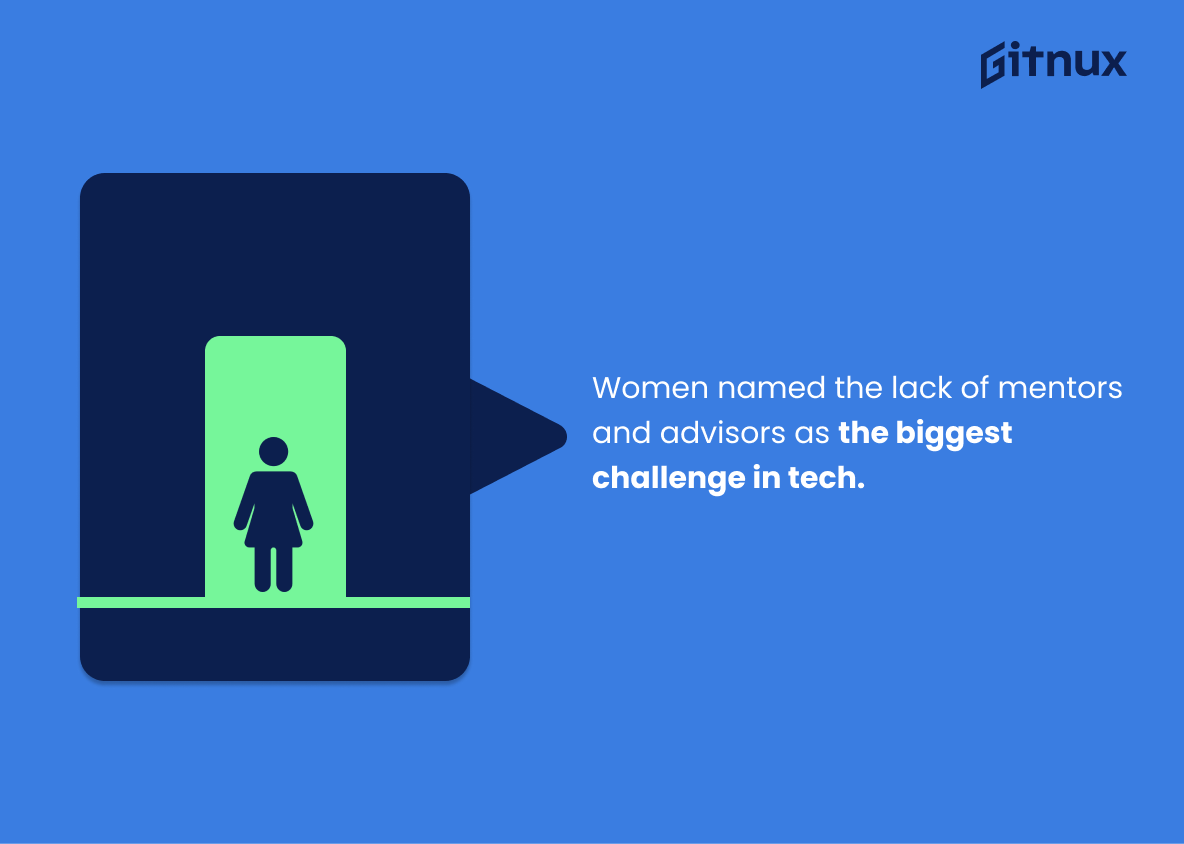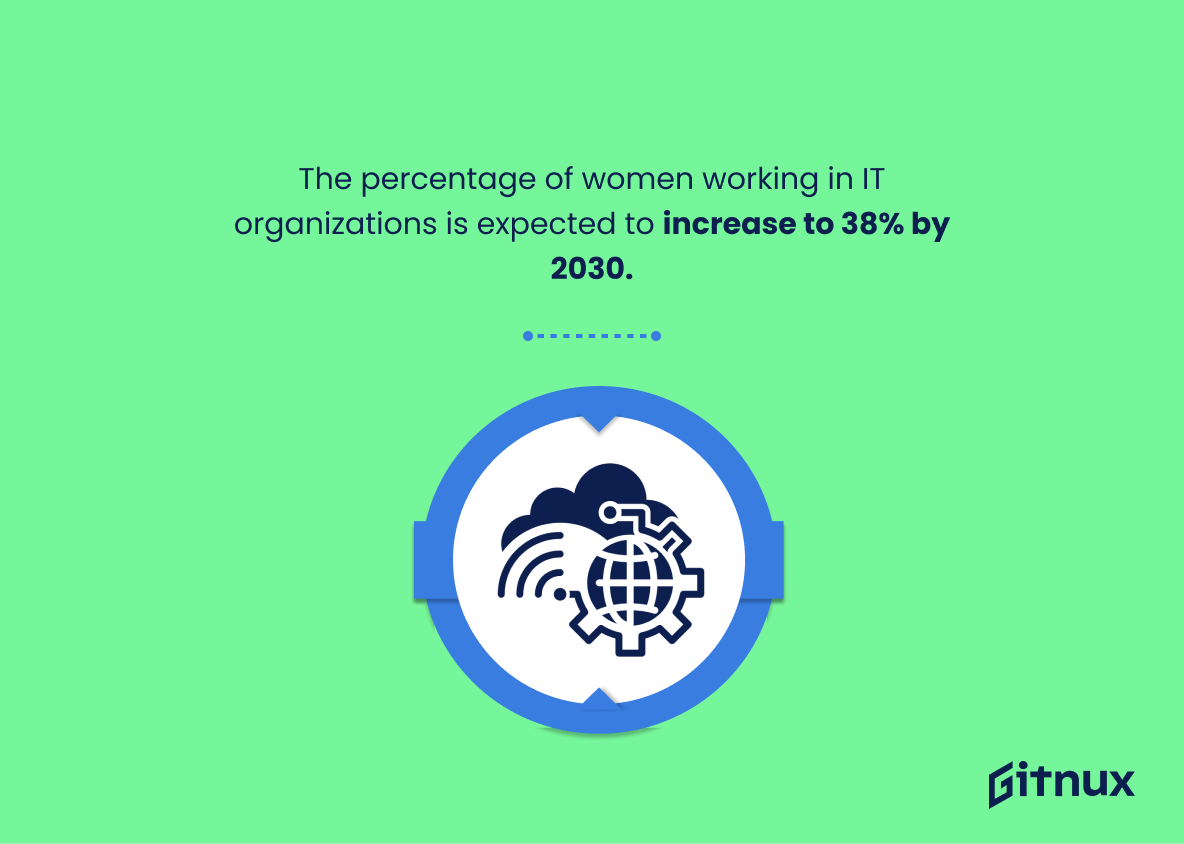As we navigate through the era of digital transformation, it is critical to acknowledge the role of women in shaping our technological landscape. Despite the legacy of innovation they have established, the landscape of technology largely remains a man’s world. This blog post delves into the compelling world of women in technology, underpinned by the power of numbers and data. We’ll take a deep dive into the latest women in technology statistics, exploring the strides they’ve made, barriers they’ve overcome, and opportunities ahead. The figures will not only reflect their journey within the tech industry but will also provide a mirror to the evolving consciousness of gender equality in the landscape of technology. Stay tuned as we paint a picture of the gender dynamics in technology, one statistic at a time.
The Latest Women In Technology Statistics Unveiled
As of 2020, only 25% of all the computer and mathematical jobs in the USA are held by women.
Highlighting a statistic like ‘As of 2020, only 25% of all computer and mathematical jobs in the USA are held by women’ serves as a powerful magnifying glass, honing in on the gender disparity within the tech industry. It provides an illustrative snapshot of the existing landscape, shedding light on the underrepresentation of women not just at the table, but in the entire banquet hall of technological innovation. By drawing attention to this data point, we underline the urgent need for strategies and initiatives that can foster greater diversity and inclusivity in these sectors. This stark reality accentuates the significance of every small step and every big leap we make towards shattering the glass ceiling in technology.
Women hold only 5% of leadership roles in the tech sector.
Illuminating the stark disparity, this figure – a mere 5% of leadership roles in the tech sector held by women – serves as a glaring reminder of the gender diversity challenge within the industry. Embedded within this statistic is not just a cold, hard fact, but the story of the enormous hill left to climb for gender equality in tech. In a field dominated by progressive and forward -thinking minds, this particular statistic marks a disheartening paradox, making it an unavoidable topic in any meaningful discussion surrounding Women in Technology Statistics. It infers the imperative to allocate greater support, opportunities and mentorship towards women, catalyzing a long overdue shift towards a more equitable tech landscape.
Women own only 5% of startups in the tech industry.
In unraveling the woven tapestry of Women In Technology Statistics, we stumble upon a striking thread: a meager 5% of tech startups are women-owned. Shedding light upon this startling piece of data adds a potent hue to our narrative. It captures not just the under representation of women in the ownership sphere of the tech industry, but also reinforces the urgency to bridge this yawning gap. This stark figure uncovers the unspoken hurdles that women face and amplifies the need for more proactive policies and measures to empower women in tech entrepreneurship. It’s the five percent that pushes us to challenge the status quo, questioning the tilt in the scale, inspiring us to strive for a more balanced, inclusive tech industry canvas.
Out of the 41% of women professionals in India, only 26% are in the engineering and R&D space.
Drenched in the realm of numbers, the statistic serves as a pulsating beacon, shedding light on the narrative of women’s role in Technology in India. A close examination reveals a mere 26% representation of women in the engineering and R&D space from the pool of 41% women professionals, bringing to surface the striking under-representation and untapped potential of women in these fields. Through these numbers, readers of a blog post about ‘Women In Technology Statistics’ may grasp the depth of the gender gap issue, stirring conversations on the need for initiatives to boost female participation, thereby aiming for a more inclusive and diverse tech industry. The statistic not only numbers our reality but equips us with fact-driven fuel to ignite change.
By 2025, the gender gap could be reduced by 14% in the IT-BPM industry if concerted efforts are made.
Diving into the deep sea of Women in Technology Statistics, let’s resurface with a ray of hope encased in the powerful prediction that, ‘By 2025, the gender gap could be reduced by 14% in the IT-BPM industry if concerted efforts are made’. Picture this – a future where the tech world isn’t a male-dominated field but a balanced platform for innovation that welcomes and acknowledges talent irrespective of gender. This predicted dip in gender disparity isn’t just a number, it speaks volumes about the potential for change. When we infuse our efforts towards achieving this, not only do we foster inclusivity, but we also pave the way for diverse ideas and perspectives that can drive the industry to unprecedented heights. Now, that’s a statistic that paints a picture of a promising, equitable future, isn’t it?
Globally, women make up less than 20% of the tech workforce.
Peering through the lens of gender diversity, the stat underscores that globally, women constitute less than a quarter of the tech workforce – a glaring indicator of the underrepresentation of women in this ever-evolving sector. In a blog post dissecting Women In Technology Statistics, this figure punctuates the ongoing narrative of gender disparity, emphasizing the triumphs yet to be achieved and the gaps yet to be bridged for gender equilibrium in the tech landscape. It’s a wakeup call that echoes the dire need for greater efforts to garner female participation; affirming that there are countless untold stories of potential female innovators and pioneers awaiting to be uncovered and championed.
Women represent only 3% of ICT graduates in Europe.
This intriguing statistic sets the stage for a deeper exploration of gender disparities within the European technology sector. It cries out the glaring underrepresentation of women among Information and Communication Technology (ICT) graduates. With only a meager 3% of them being women, it emphasizes the massive gender divide and potential untapped female talent – a plight the tech industry must urgently address. This data point stands as a motivator to peel back the layers and delve into the underlying factors, ranging from the societal constructs to educational frameworks that have led to this situation. It ultimately beckons us to contemplate the immense value and perspective diversity can bring to technological innovation and its importance in driving a more balanced, inclusive ICT landscape for future generations.
Only 38% of women in tech feel that their company prioritizes diversity.
Highlighting the fact that only 38% of women in tech feel that their company prioritizes diversity serves as a wake-up call to the tech industry. It sheds light on the uncomfortable reality of women’s perceived lack of commitment to diversity within their organizations. This data point drives home the point that there’s significant room for improvement when it comes to embracing and promoting inclusivity in this male-dominated field. A statistic like this can trigger valuable conversations about the changes that need to be implemented to create more diverse and inclusive workplaces. This insight not only enriches the narrative of women’s experience in the tech industry but also amplifies the call for firms to put diversity at the forefront of their company culture.
Women accounted for 28% of proprietary software jobs in 2020, down from 37% in 1990.
Highlighting the decline from a 37% representation in 1990 to 28% in 2020, shatters the illusion of progressive strides in gender parity within the proprietary software sector. As we peel back the layers of women’s participation in technology, this startling statistic implores us to examine the obstacles and biases women still face. In the face of broader conversations about equality and diversity, it serves as a stark reminder that there’s a regressive trend within this realm of technology, underscoring the urgency of reinstating and bolstering initiatives for gender balance. Thus, it forms a thread in the larger tapestry of women in technology statistics, providing perspective and motivating a call to focused action.
Among Silicon Valley’s tech workers, only 2.9% are Black or Latinx women.
This standout figure sheds light on a glaring disparity on the landscape of Silicon Valley tech workforce, particularly underlining the underrepresentation of Black or Latinx women. Highlighting this less-than-thriving diversity underscores the pressing need for initiatives that foster equal representation, embracing diverse talents to combat the homogeneity currently in play. Moreover, the statistic provides a vantage point, facilitating a quantitative standpoint from which to evaluate and strengthen inclusion efforts, thereby enriching the narrative of the blog post on Women In Technology Statistics.
In Australia, only 16% of STEM qualified people are women.
Unveiling the stark reality behind the scenes, this statistic unclothes the persisting gender inequality in Australia’s dynamic realms of science, technology, engineering, and math. This 16% isn’t just a value, it’s a reflection and reminder of the untapped potential, unexplored perspectives, and innovative minds that could be enhancing our technological landscape, in the form of proficient women in STEM. In the world where the technology industry is incessantly growing and evolving, the gender gap in STEM disciplines is something that should stir our curiosity, question our conventions and drive more initiatives to break down the gender divide. It resonates with the pressing need for diversity and inclusion in tech, fueling the flame of further discussions, research, programs and policies catering to empowering more women in the world of STEM.
In 2020, only 25% of board members in tech companies were women.
Revealing the stark reality of boardroom representation across tech industries, this insight draws attention to the fact that merely a quarter of those occupying these influential positions in 2020 were women. When we delve into Women in Technology Statistics in our blog, these numbers prominently stand out, signifying the persisting gender disparity at higher decision-making levels within the tech realm. It’s a glaring data point that showcases not just underrepresentation, but also potential underutilization of female talent in shaping the future of technology. This discrepancy in leadership underscores the necessity for constructive changes and diversity initiatives in tech landscapes.
56% of women in technology are leaving their employers mid-career.
The compelling statistic – 56% of women in technology depart from their employers mid-career, indeed, paints a vivid picture in the landscape of women in technology. This raises a magnifying glass to key issues like diversity, equity, and inclusion within the tech industry. It’s not just a raw figure, but a flare in the night sky, signaling the need for policy changes, workplace culture improvements, and support networks. This significant trend challenges us to question the underlying reasons, whether they rest in the realm of unequal pay, lack of opportunities, or workplace stress. Digging deeper into the reasons behind this startling statistic could pave the pathway to impactful solutions, and hence becomes a centerpiece in discussions and blog posts surrounding women in technology statistics.
Women named the lack of mentors and advisors as the biggest challenge in tech.
Undeniably, the stated statistic presents a critical insight for the discourse on Women In Technology. It unravels an often overlooked roadblock hindering the growth of women within this strongly male-dominated sector. Alluding to an alarming absence of mentors and advisors for women, it significantly underscores the necessity for directed, personalized guidance and support systems in technology, in order for women to navigate its tightly-knit dynamics and potentially tricky pathways. This, in turn, emphasizes a compelling cry for measures to foster an inclusive, supportive, and balanced arena in the field of technology.
The percentage of women working in IT organizations is expected to increase to 38% by 2030.
As we venture deeper into the era of digital domination, women are poised to leave a powerful imprint on the tech landscape. This intriguing statistic propels optimism by projecting growth in female representation to 38% within IT organizations by 2030. It underlines the increasing acceptance and integration of women in the tech realm, challenging traditionally held stereotypes about gender roles in the sector. Such nuggets of information not only illuminate the progress made thus far, but help benchmark the future advancements that are necessary to bridge the gender gap in technology. This trajectory of growth culminates a sense of empowerment, idealizing a future where the tech industry becomes a gender-neutral territory celebrating diversity and inclusion.
Women hold only 20% of all jobs in technology.
In the grand arena of technology, the alarmingly low proportion of women, a mere 20%, as the main players paints a vivid picture of gender disparity. Serving as a bold underline in a blog post about ‘Women In Technology Statistics’, this number not only illuminates the present reality but also raises pressing questions about untapped potential, innovating perspectives and missing inclusivity in tech-centric professions. We must look at this figure as a prompt, encouraging dialogue regarding the need for diversity and gender equality in tech, while inspiring strategies towards nurturing an environment where female participation can flourish.
Only 20% of tech jobs at Google, Microsoft, Twitter, and Facebook are held by women.
Highlighting that a mere fifth of tech jobs at tech giants like Google, Microsoft, Twitter, and Facebook are filled by women paints a stark yet revealing picture of the prevailing gender imbalance in the tech industry. This slices through the superficial veneer of equality and speaks volumes about the underrepresentation and missed opportunities for women in this major economic sector. For a feminist reading about Women In Technology Statistics, this can act as a provocative wake-up call, compelling us to examine and address the root causes behind this disparity – be it lack of access to opportunities, societal conditioning, unequal pay or more. It’s an invitation to fuel a more progressive, inclusive dialogue about the future of women in technology, and a stepping stone towards taking actions that will tip the balance.
On average, a woman software engineer earns 28% less than a man in the same position.
Reflecting on this striking data, we journey into the crux of gender disparity in the technology landscape, particularly wages. It serves as a poignant reminder about the enduring wage gap, capturing the stark reality that despite holding identical roles, women software engineers earn significantly less. This 28% discrepancy not only underscores the financial inequality faced by women in tech, but is also symptomatic of wider, systemic issues impacting career progression, opportunities, and workplace culture. In the broader discourse of Women in Tech statistics, it sheds light upon why it’s crucial to bridge this gap, creating an inclusive, diverse and equitable tech industry, where pay is not governed by gender but by skills and capabilities.
Conclusion
The study of women in technology statistics is not just an analysis of numbers, it’s an evaluation of progress, potential, and opportunities in an ever-evolving landscape. The disparities revealed are stark, yet they build the basis for change and serve as a measure of how far we’ve come and the journey that still lies ahead. As the commitment to balance gender representation and foster inclusivity in the tech sector grows, we look forward to seeing these statistics change. Women in tech bring unique perspectives, creativity, and dynamism that is invaluable to the industry. It is undeniable that increasing the representation of women in technology is not just a societal obligation, but an essential element that enhances innovation, productivity, and growth in the tech world.
References
0. – https://www.www.livemint.com
1. – https://www.www.ncwit.org
2. – https://www.www.wired.com
3. – https://www.www2.deloitte.com
4. – https://www.www.pwc.co.uk
5. – https://www.www.pewresearch.org
6. – https://www.techcrunch.com
7. – https://www.builtin.com
8. – https://www.www.science.org.au
9. – https://www.www.information-age.com
10. – https://www.www.bls.gov
11. – https://www.home.kpmg
12. – https://www.digital-strategy.ec.europa.eu
13. – https://www.www.cnet.com
14. – https://www.hired.com
15. – https://www.www.kaporcenter.org
16. – https://www.www.startupgrind.com
17. – https://www.startupgenome.com

